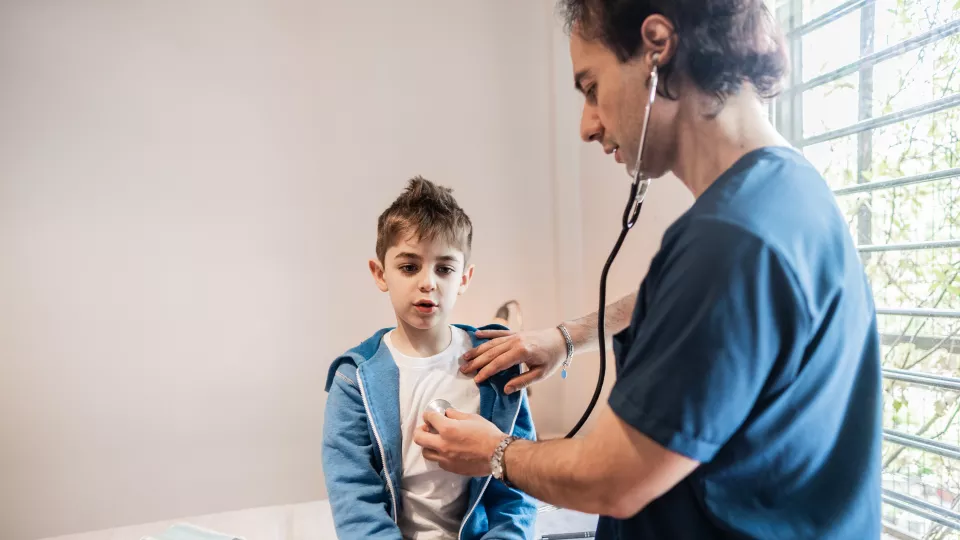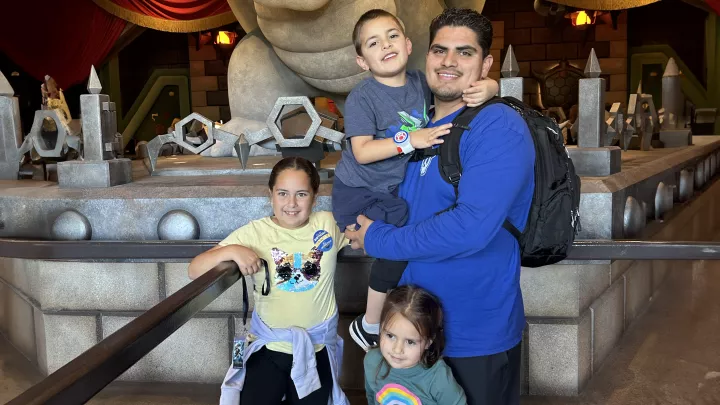
What is Heart Transplant Rejection?
A heart transplant can be the best option for children with end-stage heart failure. Heart failure from congenital heart disease is the top reason that children under one year of age need a transplant. The second leading cause of transplants is heart failure from cardiomyopathies—when the heart loses the ability to pump blood throughout the body—caused by infection or because of genetic reasons. A heart transplant is a lifesaving gift. But it means adjusting to a new way of life. Without anti-rejection measures, the body’s immune system will reject the transplanted heart.
What is transplant rejection?
In rejection, the immune system attacks the transplanted heart. It tries to destroy the new heart as a foreign threat—causing the transplant to fail. This risk is highest in the first year after transplant but can happen at any time.
Balancing immunosuppression with its effects
To prevent rejection, transplant patients take powerful drugs. These medications suppress the immune system to prevent it from attacking the heart. However, weakening immune defenses raises risks for various infections, even cancers. Precautions patients can take include washing their hands to prevent infection, avoiding sun exposure and visiting a dermatologist. Immunosuppressants can also increase risks for other conditions like diabetes, high cholesterol, high blood pressure, and bone loss. They also cause adrenal insufficiency (not enough cortisol, a hormone).
“The immunosuppression medication levels are higher in the first year after transplant,” says Jennifer Su, MD, a pediatric heart specialist at Children’s Hospital Los Angeles. "After a while, we lower the level of medications so that treatment doesn’t create too much strain on their other organs.”

Why care at a children’s hospital matters
The quality of post-transplant care is crucial to ensuring successful long-term outcomes. CHLA is rated the top facility in the Western U.S. for complex pediatric heart surgery. Its 3-year heart transplant survival rates are among the best in the U.S. CHLA surgeons are experts at performing transplants in children with complex, rare anatomy. Often other organ systems are involved. CHLA medical teams can draw on specialists in different areas on call. “We on the medical team are just one part of transplant success,” Dr. Su says. “After the transplant, the families carry the worries and the concerns.”
Rejection occurs in different ways
There are different types of rejection:
- Acute rejection, when the body’s immune system attacks the heart. Doctors detect acute rejection by tissue biopsy. “We treat cellular rejection with steroids and IV medication,” says Dr. Su.
- Antibody-mediated rejection: This happens when antibodies, which are specialized proteins produced by the immune system, recognize and bind to perceived invaders. The immune system creates antibodies in response to previous surgeries, blood transfusions, transplants, pregnancies, illnesses or vaccines. “Often for antibody-mediated rejection, we use antibody depletion therapy,” says Dr. Su.
- Chronic rejection, a third type of rejection, can happen over years. It can limit the life of the transplanted heart. Chronic rejection usually happens in patients with consistently elevated antibody levels. Dr. Su explains that while their biopsies may not show severe abnormalities, these patients have long-term, underlying low-grade rejection. Chronic rejection can cause an accelerated form of coronary artery disease called cardiac allograft vasculopathy, which leads to blockage of the heart’s arteries. There are very few treatment options for cardiac allograft vasculopathy, which is typically a progressive process.
Rejection can be invisible
“Typically, we find evidence of rejection through blood tests well before patients have symptoms,” says Dr. Su. “At CHLA, we follow up with patients every month in the first year after transplant. If they're far enough out from transplant, it will be every three months.” Suspicious results will trigger an EKG and an echocardiogram. “If there is enough suspicion, because of concerning cardiac testing, new symptoms, or even perhaps if a patient’s immunosuppressant drug levels were low, we would do an urgent biopsy to either confirm or rule out rejection,” she says. If indicators of rejection are found, the team will then conduct a heart catheterization to find out if rejection is indeed occurring. Doctors will generally then raise the dose of immunosuppressant drugs.
Patient symptoms that could suggest rejection include:
- Palpitations
- Fast heartbeat or pulse
- Difficulty in breathing, or a decrease in energy
This happens more often if a patient’s immunosuppression levels have been erratic, if they have skipped regular follow-up appointments, or if they haven't been taking their medicines consistently, Dr. Su observed. “There would already be a significant amount of rejection if it's causing symptoms,” she says.
Living life post-transplant
There is much about post-transplant life that patients cannot control, but they can lead as full and active a life as possible. This could mean going back to school, playing sports and seeing friends. Patients and their families can increase the odds that the transplant will be successful by:
- Eating a healthy diet (transplant patients are advised to eat certain foods and avoid others)
- Exercising as much as possible
- Consistently taking medications
- Contacting the medical team if they notice any changes
- Attending follow-up appointments
“For a successful transplant and a good outcome, it takes a lot of trust in partnership with the families, who are the best advocates for their children,” Dr. Su says. “I learn so much from my transplant patients and their families. It's just really an honor to take care of them.”


